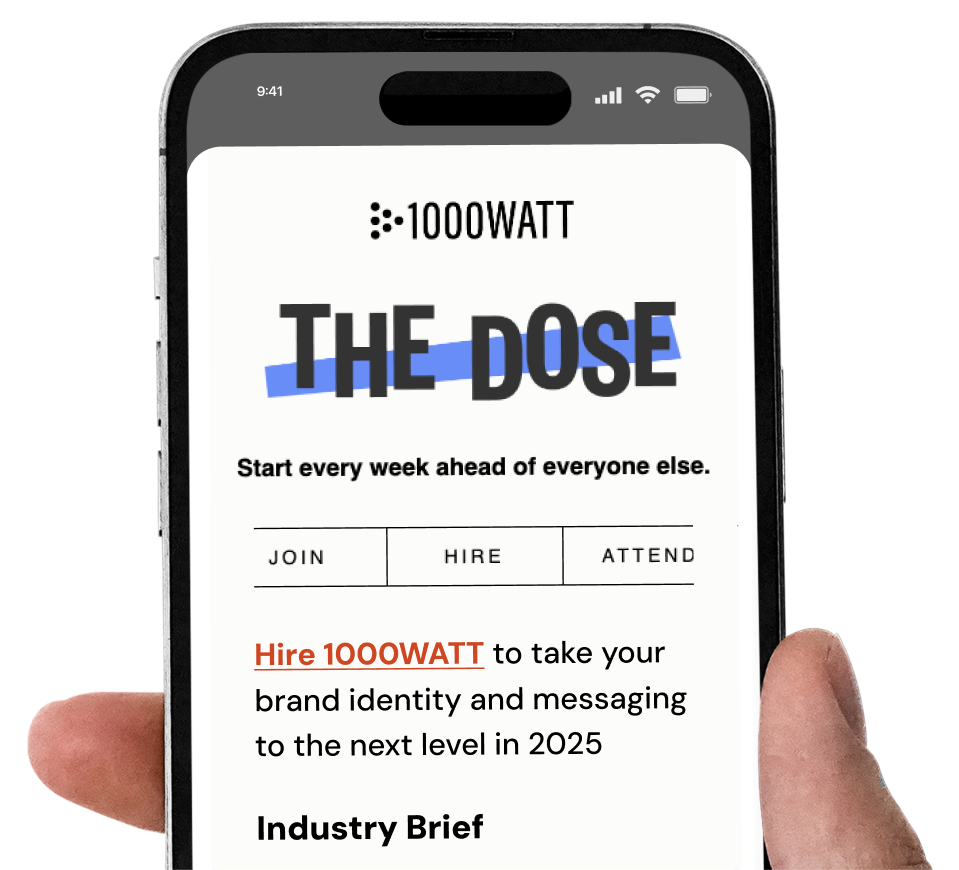Friday Flash: Nobody wins
No: 1272

Imagine showing up to a ballgame in a tuxedo.
You’d stand out. People would admire your tailoring. But you’d look confused. Misplaced. Someone who fundamentally misunderstood the assignment.
I see this in branding constantly: visual identities dressed for the Met Gala while the business and its customers are most at home in Carhartt.
Why is this a problem worth surfacing?
When identity misses the mark
A home builder asked my opinion of their new identity. The serif typeface, cream and charcoal palette, and clean symbol with delicate lines had the hallmarks of luxury. Having reviewed his product — mid-priced homes in extension markets, from unaffordable cities — I shared my opinion.
“The logo is beautifully designed. Props to the designer. But here’s my struggle: It’s a tuxedo at a ballgame. Out of place.”
“That’s what I thought you’d say. How do we fix it?”
The symbol speaks before you do
Among decision-makers with limited design literacy persists a dangerous misconception: that brand identity is decoration or a vehicle to project aspirational qualities regardless of authenticity. This misalignment creates a semiotic dissonance that consumers intuitively detect.
Identity isn’t subjective ornamentation; its job is objective communication. When presenting concepts, feedback like, “I have a personal aversion to chartreuse” reveals this misalignment. Identity isn’t for stakeholders. It’s for the marketplace — a distilled communication device representing brand attributes that attract customers.
I wonder if part of the problem lies in the terminology. “Logo” sounds like a game. It’s what “Billy” is to William Randolph Hearst. It diminishes importance and lacks the gravitas of what it really is: a brand visual identity system.
The AI illusion
This diminished perception explains the proliferation of AI logo generators, which treat identity as a commodity rather than strategy. Yes, AI can assign a typeface to a word. So can a seven-year-old. But AI cannot design branding that communicates specific aspects that build connectivity and trust with customers.
For that, you need a human who understands the science of brand design. Someone who can interpret business objectives, audience psychology, and market positioning, then translate them into visual elements engineered to communicate precisely. This isn’t subjective artistry; it’s strategic design science.
I get that AI is free and fast, but the result — an infertile mark signaling nothing substantive — has a cost associated with it that includes failing at driving affinity, loyalty, and sales.
This failure stems not from AI’s limitations, but from the fundamental misunderstanding of what brand identity is by those who commission it. What comes out will only ever be as good as what goes in.
The half-luxury problem
A common mistake is “aspirational identity disorder” — the desire to adopt luxury branding codes while everything else about the business remains mid-market. When the symbol says exclusive luxury but the service says “accessible value,” you don’t elevate perception, you confuse it.
It’s not that people walk around bewildered. It’s subtler. The product or service isn’t receiving what the identity projects, causing brands to lose the right customers while failing to attract those they aim to seduce.
Looking good on swag isn’t sufficient justification. The job of a logo is not to look good, it’s to look appropriate. And the idea that luxury aesthetics are inherently better than other design approaches is false. Some of the world’s most powerful luxury brands have remarkably simple identities: Chanel, Prada, Rolex.
Consider Dieter Rams’ principle that “good design is as little design as possible.” The stronger the brand, the simpler the identity can be, allowing it to absorb brand equity without interference.
For mid-market brands, beauty isn’t relegated to luxury codes. Beauty in visual design emerges from clarity, relevance, and differentiation.
This tends to get lost on stakeholders who approach identity as a matter of personal taste rather than strategic alignment.
Design is language, not decoration
Imagine if John Deere abandoned its straightforward leaping deer for an ornate, prancing farm animal or elaborate wheat motif in gold filigree. Farmers would roll their eyes, and Caterpillar would find itself with a showroom full of new customers. The simple deer speaks volumes: reliable, strong, unpretentious — precisely what their market demands.
Identity is not adornment. It’s a language complete with grammar, syntax, and vocabulary. Every color choice, typeface, and proportion communicates specific information. When a company that needs to signal accessibility adopts elements that say “exclusive,” it’s like using complex baseball catcher signals to communicate with someone who speaks hockey. The meaning is completely lost.
A law firm wouldn’t use casual slang in court filings. A brand shouldn’t mismatch its identity to its offering. This incongruence creates cognitive friction that erodes trust.
Our framework for clients is simple and helps everyone get the most out of the engagement. It’s like this:
Identity is not art (though it can be artful). Its primary purpose is communication.
A successful brand symbol need not be literal. It needs to be distinctive, recognizable, authentic, and meaningful to your ideal customers.
Be a spokesperson for the brand. Not yourself. The brand is not for you.
Tuxedo at the ballgame
If you’re a reliable, friendly brokerage serving middle-income families, embrace that identity. Your visual branding should celebrate the value you provide rather than apologize for not being something else.
Walmart isn’t trying to look like Neiman Marcus. Southwest Airlines isn’t trying to look like Emirates. They know who they are.
In the end, the most potent branding isn’t about showing up to the ballgame in a tuxedo; it’s about wearing exactly the right uniform for your team.
When your brand symbols truly reflect your reality, they don’t just attract the right customers, they repel the wrong ones.
And that strategic clarity is worth more than all the gold foil business cards in the world.
Smart industry takes and creative inspiration.
